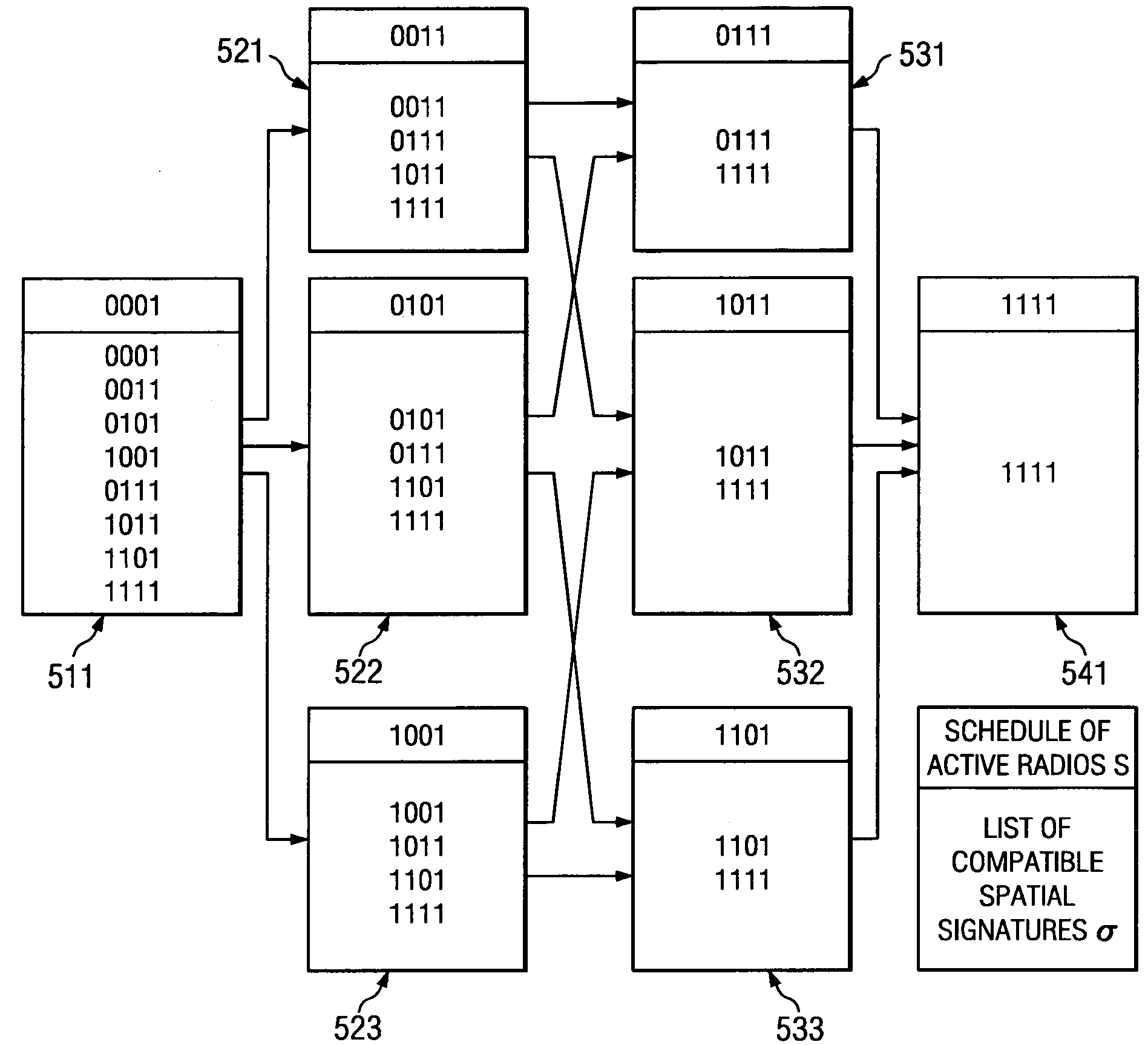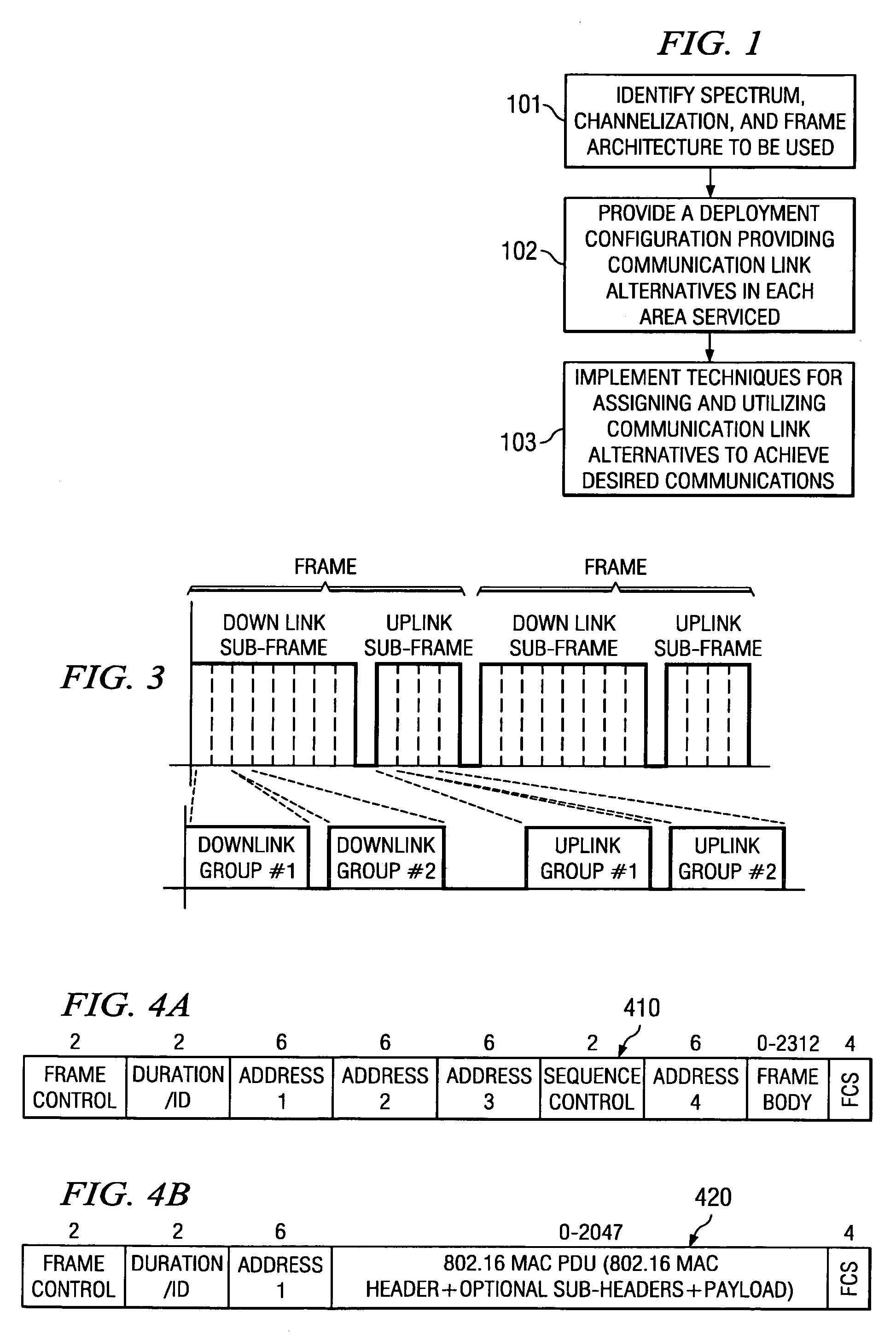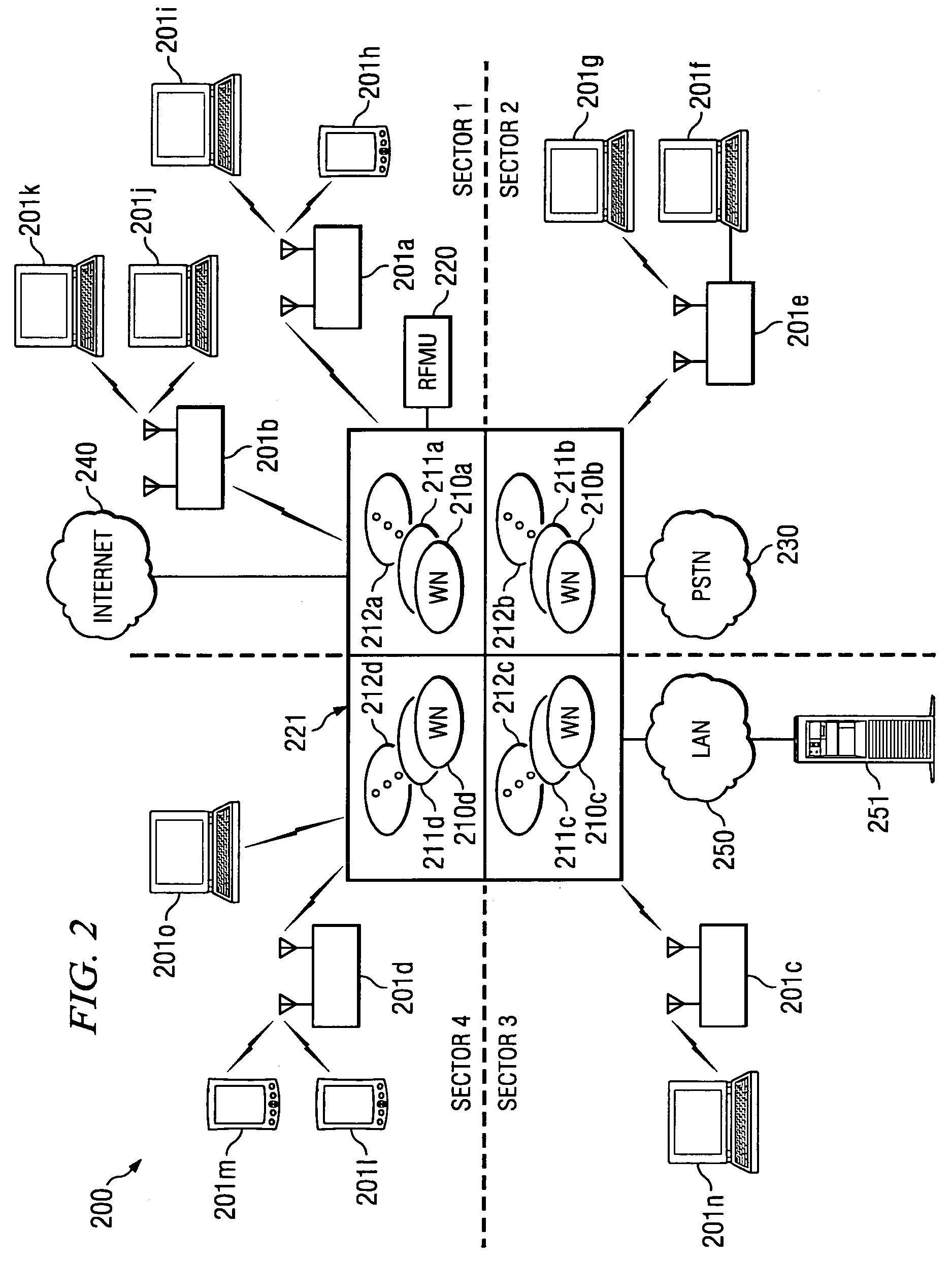System and method for interference mitigation for wireless communication
a wireless communication and interference mitigation technology, applied in the field of wireless communication, can solve the problems of high interference, difficult deployment of wireless communication links, and high regulation of wireless spectrum, and achieve the effect of facilitating interference mitigation and enabling utilization of spectrum
- Summary
- Abstract
- Description
- Claims
- Application Information
AI Technical Summary
Benefits of technology
Problems solved by technology
Method used
Image
Examples
Embodiment Construction
[0030]Directing attention to FIG. 1, a high level flow diagram setting forth steps for implementing wireless broadband access according to an embodiment of the present invention is shown. Having determined that wireless broadband access is to be provided, spectrum to be used, and channelization and frame architectures to be implemented in establishing communications via wireless communication links in the selected spectrum are identified (step 101). A configuration for deploying wireless broadband infrastructure to provide communication link resource alternatives throughout a service area is provided (step 102). Techniques are implemented (step 103) for assigning and utilizing wireless communication link alternatives to achieve desired communication objectives, such as to provide a desired QoS as may be measured by bandwidth, delay, jitter, loss rate, and / or other attributes.
[0031]Where unlicensed spectrum is to be utilized in providing information communication, such as for impleme...
PUM
 Login to View More
Login to View More Abstract
Description
Claims
Application Information
 Login to View More
Login to View More - R&D
- Intellectual Property
- Life Sciences
- Materials
- Tech Scout
- Unparalleled Data Quality
- Higher Quality Content
- 60% Fewer Hallucinations
Browse by: Latest US Patents, China's latest patents, Technical Efficacy Thesaurus, Application Domain, Technology Topic, Popular Technical Reports.
© 2025 PatSnap. All rights reserved.Legal|Privacy policy|Modern Slavery Act Transparency Statement|Sitemap|About US| Contact US: help@patsnap.com



